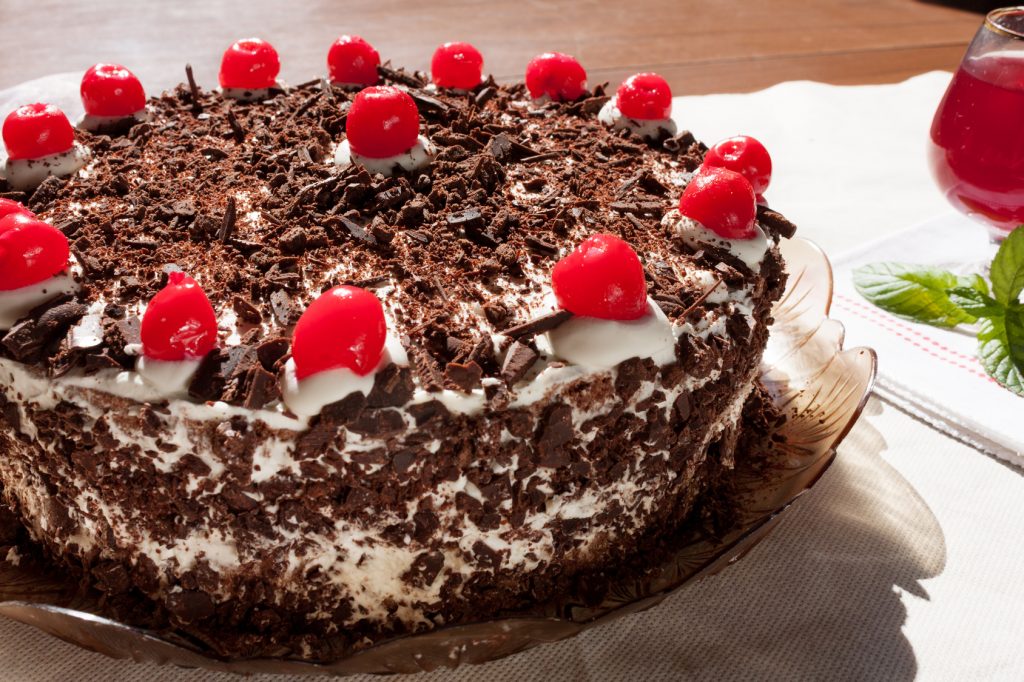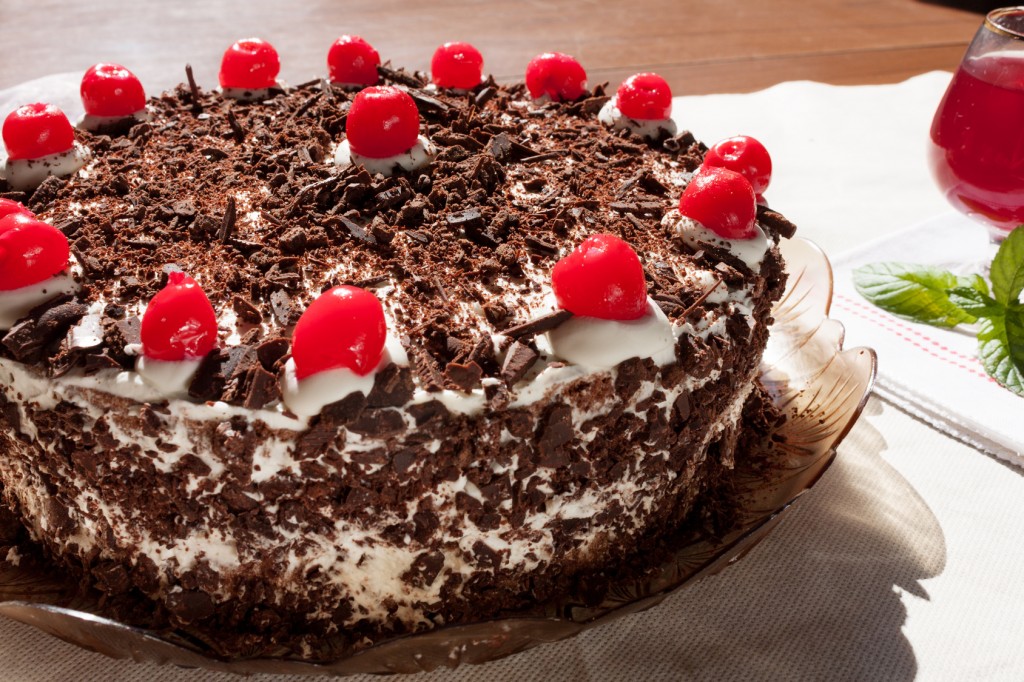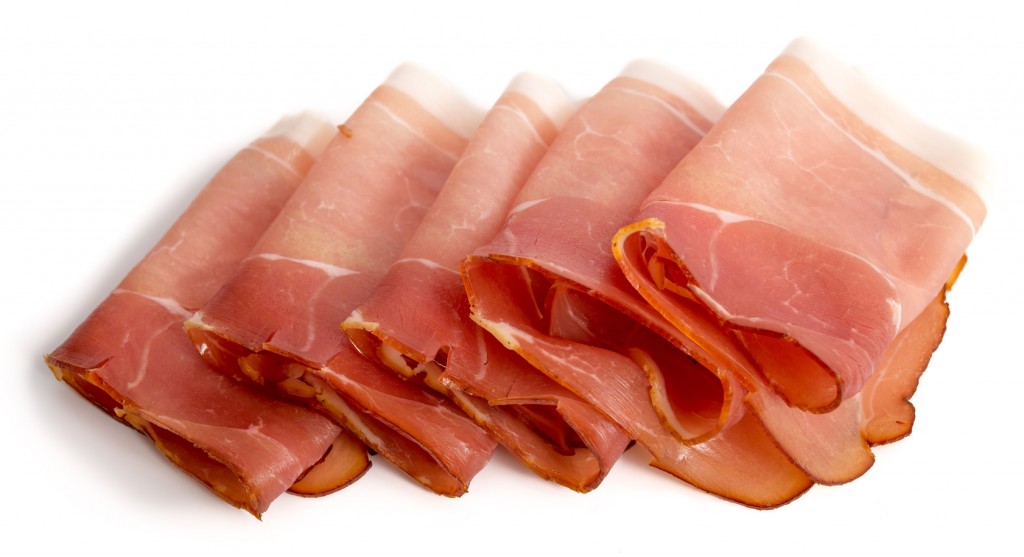Here’s why the Black Forest of Germany is deeply associated with both a special kind of ham and a cherry-chocolate cake.
The Black Forest—or Schwarzwald, in German—isn’t strictly a forest. It’s actually a mountain range, found in the southwestern corner of Germany. It’s probably best known to non-Europeans in the names of two foods: Black Forest Cake and Black Forest Ham.
The dessert known in German as Schwarzwälder Kirschtorte (“Black Forest Kirsch cake”) isn’t named for the Black Forest, but for the cherry liqueur that gives the dish its signature flavor. Kirschwasser is a tart cherry liqueur distilled from German cherries. A German baker and candy maker named Josef Keller claims to have invented the Black Forest Cake in 1915 while working at the Café Agner outside of Bonn—which is about 300 miles away from the actual Black Forest. The cake, consisting of chocolate cake, cream, cherries, and Kirschwasser was a twist on a traditional German dessert of cream, cherries, and the cherry liqueur—Keller just added them to a cake.
Unlike the cake with a similar name, Black Forest Ham does, however, originate in the Black Forest region. A boneless ham made from the thigh and rump of a pig or boar, Black Forest Ham enjoys “Protected Designation of Origin” status in the European Union. This means that if a product is sold anywhere in the EU as “Black Forest Ham,” it must legally have been produced in the Black Forest region of Germany. (Roquefort cheese and champagne are other products that have such a designation.) No such rule applies in the U.S., where any meat manufacturer can call any ham “Black Forest Ham.”
Here’s how real Black Forest Ham is made in Europe (and in the Black Forest specifically): The raw ham is salted and seasoned with garlic, pepper, and juniper berries. It’s cured for two weeks, at which point the salt is removed, and then the ham cures for another two weeks. It’s then smoked (with burning juniper or fir brush) at a temperature of around 77°F for a few more weeks, and it turns black on the outside. The ham is then air-dried for another two weeks. The entire process can take as long as three months.

Black Forest: The Land of Ham and Chocolate









